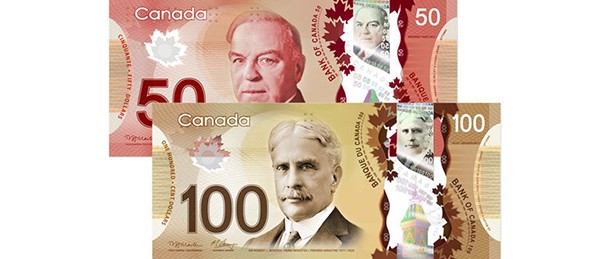16 December, 2012
As I began researching this Post, I began to find there was no real consolidated list of which countries either experimented* in some way, or adapted their entire library of issued denominations, to a polymer substrate. The closest I could find was a long-winded footnote in a Wikipedia listing for “Adoption of polymer banknotes“. In this as in other references, I found one of two trends. Most prominently, as due to the nature of the objective, are commemorative notes. Usually countries in this group adapt one or two denominations perhaps only for one or more predetermined issues. The second group is significant and interesting because all it’s members are driven by a combination of wanting increased counterfeit deference and increased longevity in circulation.
* Â there are many references to aborted and failed attempts to issue single denominations and in some cases a countries full library Â
It is the second group which contains members who have suffered at the hands of determined criminal effort, or fear for the event that their currency be targeted. This group is of most interest to me because I believe they represent the advancement of hard currency technology, which is necessary in order to maintain confidence and value in a basic building block of society. Without hard currency – if all the countries of the world converted overnight to digital and/or card based platforms and eventually devalued hard currency – people would find a way out of necessity to create one. The result would carry the credibility of the issuer no farther than the reach of, and vouch for, the issuer’s reputation. Please note the implication behind the sentiment – people would create some form(s) of currency. First the unbanked without the necessary reliable and uninterrupted access to on-line connectivity. Second those who request or require anonymity in their transactions, and; Third are those who need speed and flexibility in small transaction situations, of which there are plenty each day. All-in-all another perspective supporting the hypothesis that hard currency, supported globally at the Nation level will persist for many more decades to come. Perhaps even another few centuries. Only my far distant relatives will know for sure (as long as we survive December 21st, 2012).
Norway has a unique opportunity to join a small group of firmly established global partners in establishing a level of banknote that can be extremely difficult to counterfeit in addition to lasting up to (and in some cases beyond) twice the longevity of current high circulation denominations. I think what adds to the opportunity for the Norwegians is the fact that they have a particular pride in the art and historic representations portrayed across many series of banknotes. As has been demonstrated by Australia, Canada and others polymer based notes can be relatively easily introduced to a population and be fully transitioned with a decreased social sense of risk to counterfeit over a few short years. It will be interesting to see what substrate is chosen for the pending new Krone.
A list was spoken of at the beginning of this brief Post. I have compiled the following from the most credible and up-to-date source I could find - Wikipedia – if there are any disputes and or omissions / corrections required, I request that central bank employees of affected countries who are also visitors to Counting On Currency (or other verifiable contact) please contact us with any updated information. This list is not verifiable beyond the limited assurances of Wikipedia:
Countries Using Polymer Notes (39) – Year of First Transition
Costa Rica, Haiti – 1982
Isle of Man – 1983
Australia – 1988
Western Samoa, Singapore – 1990
Papua New Guinea – 1991
Kuwait, Indonesia – 1993
Thailand, Brunei – 1996
Sri Lanka, Malaysia – 1998
New Zealand, Romania, Taiwan, Northern Ireland – 1999
Brazil, China, Bangladesh, Chatham Islands – 2000
Solomon Islands, Vietnam – 2001
Nepal, Mexico – 2002
Zambia – 2003
Chile – 2004
Romania, Bulgaria – 2005
Nigeria, Hong Kong, Guatemala – 2007
Israel – 2008
Bermuda, Nicaragua, India – 2009
Dominican Republic – 2010
Canada, Mozambique – 2011
Canadian Polymer Story – various Bank of Canada videos
http://youtu.be/ilmyky7x9XQ










